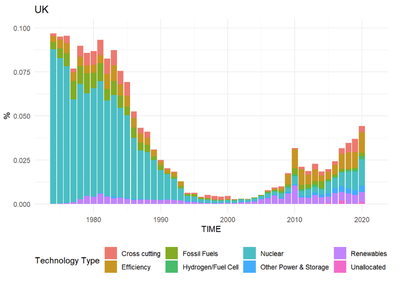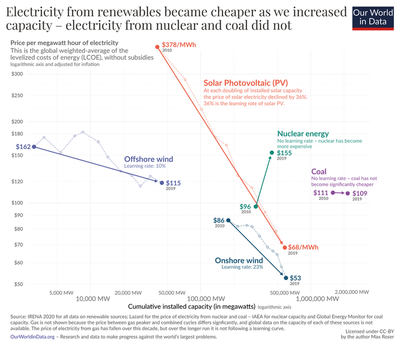Clean technologies for growth and levelling up?
Clean technologies are a strategy for economic growth in the UK
To address the climate change emergency we need further improvements in so called clean technologies. The cost and convenience of clean options has to come down via innovation. That’s why many governments are targeting public R&D subsidies on clean technologies.
Governments also have traditionally supported R&D efforts with the aim of promoting economic growth. This can work because private investors are likely to under invest in innovation because they don’t internalize knowledge spillovers from their innovation efforts.
Does this mean investments in clean innovation are a way to both promote economic growth and prevent climate emergency? This depends on the opportunity cost of such an effort. If governments fund clean R&D, they will not fund something else, which might have been more beneficial for economic growth in the short run. In a new study in collaboration with BEIS, we have been comparing the returns of public investments in various clean technologies with other leading technology areas such as AI or biotechnology.
We use a new indicator - the Industrial Strategy Index (ISTRAX, details here) to estimate the economic return of public R&D subsidies. This takes into account the value of both direct and indirect knowledge spillover from R&D. It also accounts for the fact that the value and cost of an innovative step might vary considerable between different technology types. We also consider that most knowledge spillovers will flow across national boundaries. However, governments will typically want to target R&D investments that benefit their respective constituencies. With our method we take this into account even if the knowledge flows are indirect; i.e. knowledge flows might traverse other countries before flowing back to the UK.
With this approach we find that clean technologies are among the best R&D subsidy investments the UK government can engage in with returns that are more than 40% higher than average returns. In particular R&D on tidal and offshore wind are found to have highest returns.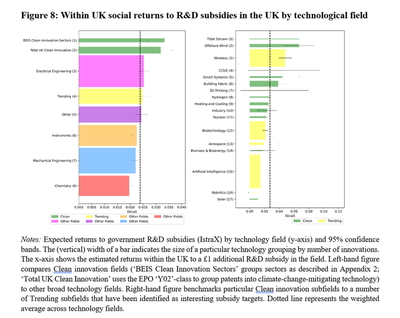
Clean levelling up?
In related recent results (Published here) we find that targeting clean technologies can be part of a sensible strategy for (so called) levelling up. For that we look separately at the returns of R&D subisides for high productivity vs low productivity parts of the UK. Crucially, in doing so we only consider returns from knowledge spillovers if they are internalised within a respective regional grouping. This suggests that it is particularly in low productivity regions where clean technologies generate the highest returns.
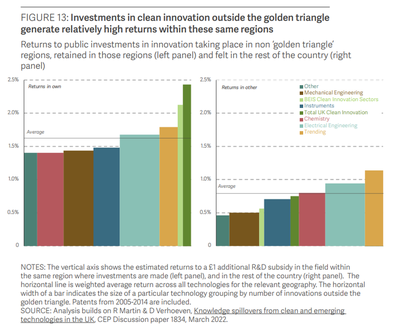
This is in contrast with high productivity areas (inside the “Golde Triangle”) where other technologies generate higher returns:
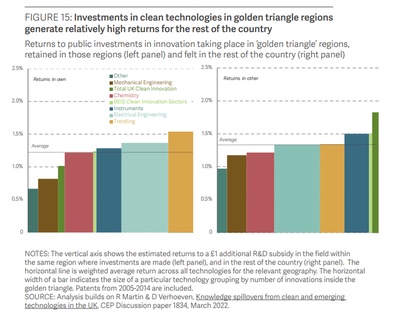
Interestingly, we find that investments in clean R&D will have high (above average) returns in low productivity regions even if those investments are undertaken in high productivity regions. In other words: the government supporting clean innovation in Oxford or Cambridge (say) will most likely be more beneficial for rest of the UK than investing in non clean R&D in Newcastle (say). This is because clean innovations in the leading places generate vastly more knowledge spillover flows everywhere in the country.
What is happening?
UK Government energy R&D spending has been improving in recent years. That said, with less than 0.05% as share of UK GDP it is still far below the levels we have seen in the early 1980s during the various oil price shocks then. Also, whereas in the early 00s R&D spending went up primarily due to funding of renewable energy projects and energy efficiency research, a surge in recent years was primarily driven by expanding support for nuclear energy.